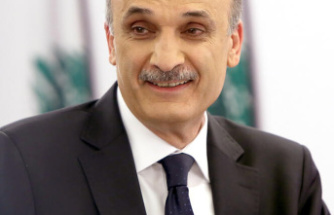The Social Security Ministry does not finish closing a structural reform of the pension system when it already starts the following. Revaluation with the IPC, new penalties to early retirement, increase of contributions and, now, a public pension fund that will be ready in June. It will be nurtured of contributions from companies and workers until reaching a patrimony of around 120,000 million euros in 2032, when it turns a decade.
In 2032 the Reforms of Escrivá will have nourished with between 20,000 and 40,000 million reserve fund of pensions. Revenue reinforcement is the route chosen by the government to restructure the system. The last initiative is already a preliminary draft law approved yesterday by the Council of Ministers. Part of a recommendation from the Toledo Covenant to create supplementary savings systems to the principal of pensions, financed from the contributions and subject to reforms by the tension generated by the Baby Boom retirement. The contributions will come from companies and workers and, according to social security projections, will be extended in the next decade until covering one of each two workers.
The scale of changes and speed that Minister José Luis Escrivá has imprinted on his processing has raised ampoules with the intergenerational equity mechanism (MEI) and also does so in this case. Entrepreneurs assured yesterday that the consultation in social dialogue has been practically null, although from social security it is maintained that there have been several contributions of CEOE to the text and that is open to more proposals.
Be that as it may, the project has already thrown out. The system of so-called employment plans already currently exists, although its use is minority. Only 10% of the workers currently have this savings instrument and the Escrivá model is the acceptance it has in territories such as the Basque Country, where the proportion amounts to 48%. With this proportion, which is a data considered achievable for social security, about nine million workers would save in 2030 to complement their pension.
Currently, the figure of participants hardly exceeds two million, so the government wants to create a whole scenario of incentives and mechanisms that accelerate its expansion. Without appearing in the roles or in any official discourse, the first workers' incentive to seek a complement after its withdrawal would be that the main pillar of the system, the sustained by the contributions is subject to reforms that will harden access to retirement.
Then, direct incentives will focus basically on issues as their cost in terms of maximum managers commissions and, on the other hand tax benefits. Social Security considers that the 1% commissions that are currently charged in individual plans are not a valid reference for being excessively high. Consequently, it will organize a public contest between managers in which the price of its services will be a determining element in the concession. The declared objective is that it is, at a lot, half.
On the subject of the taxation, the Government has set benefits for contributions up to a maximum of 8,500 euros per year distributed 50% between companies and workers. At this top in employment plans, another 1,500 euros could be added even in an individual pension plan. In total, the figure will amount to 10,000 euros per year. It is an amount that is far from the reality of the pockets of the vast majority of workers. The participants of the employment plans had in 2020 a half-inverted heritage of 17,500 euros.
These two financial tools will be added another legal entity, which will serve to send these employment plans to SMEs and autonomous, which make up 99% of the country's business tissue. The plans will not be mandatory but the government expects them to become a new protagonist of labor relations in companies and that is considered as a "deferred salary". They will be negotiated at the Social Dialogue Tables to be included within sectoral agreements. Small and medium-sized companies will thus arrange an agreement to be linked and once they do so, if they do not decide on what fund to deposit resources, the Gestora Commission will assign it by default within three months. This Commission shall be composed of nine members of the Administration - Four of Social Security, one of work, another of economic affairs and another of ecological transition. They will represent the majority, but they will be accompanied by four counselors appointed by the employers and four others by the unions.
Escrivá has indicated that employment plans such as the one approved have not grown in Spain in recent years due, among other reasons, to the fact that the tax benefits of this savings formula were oriented to individual pension plans, "aimed at High or very high income ". From the hand of Escrivá and the Minister of Finance, María Jesús Montero, the maximum contributions that can be accommodated to tax benefits in these individual plans have been reduced to 1,500 euros.
Date Of Update: 24 November 2021, 09:05











